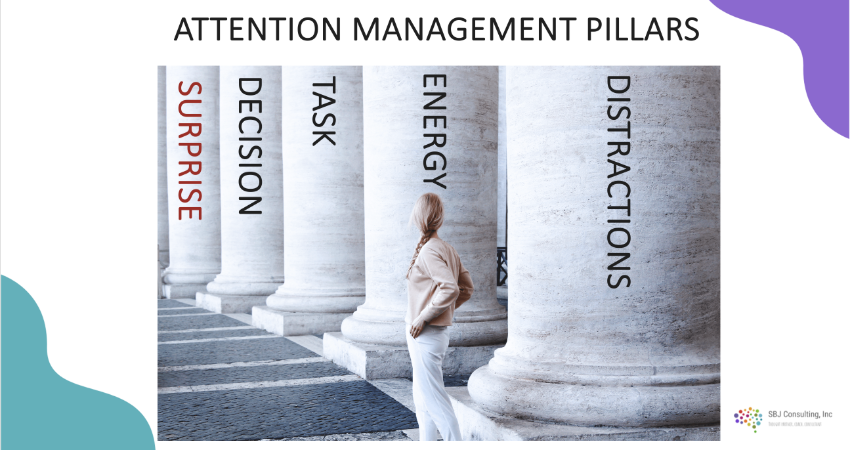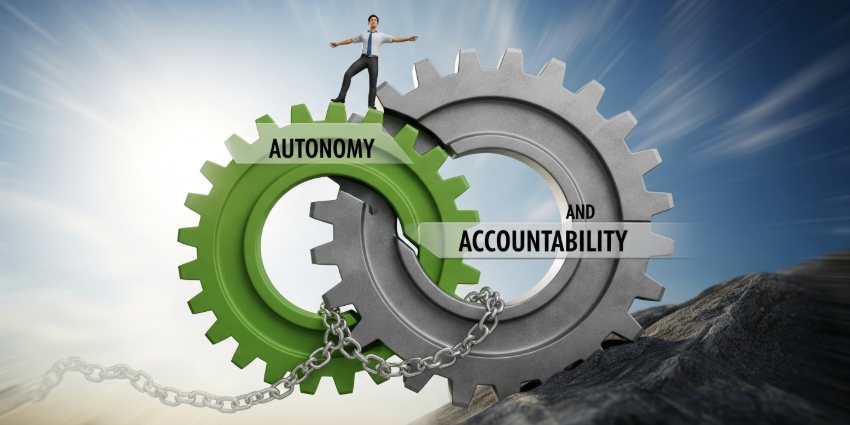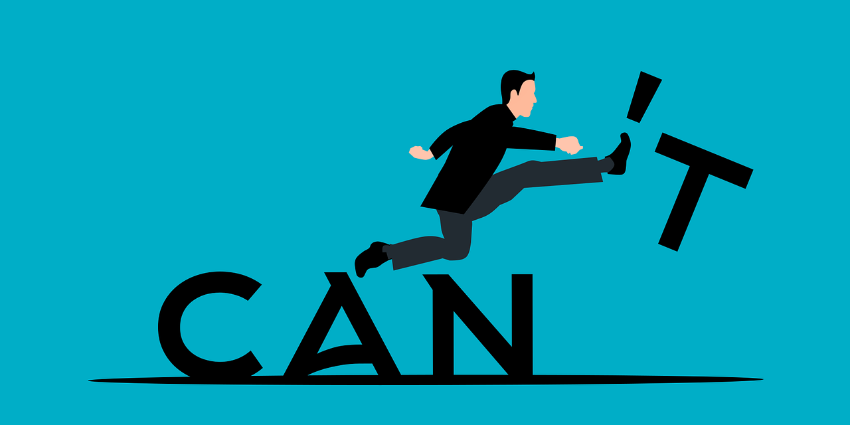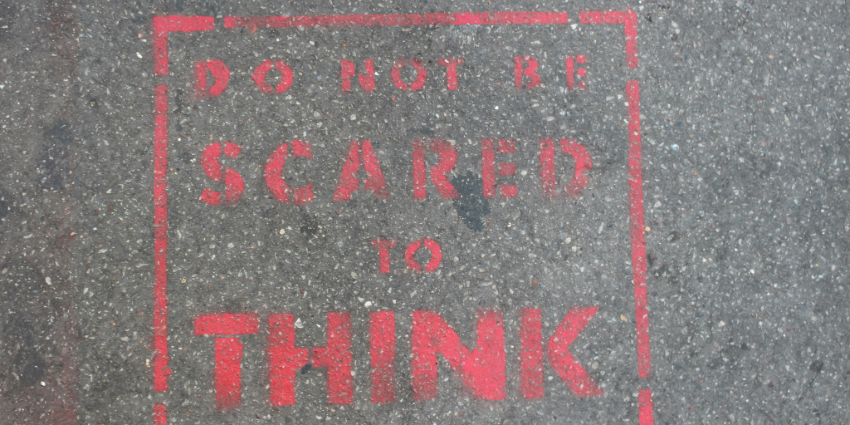As mentioned in last Friday’s Thought Partner, the month of August will focus on Attention and Energy. Particularly, where we focus our attention and therefore where we place our energy.
This picture might look familiar to some of you (those being my fabulous clients and former clients). I often find myself sharing this image in coaching sessions as a means of illuminating the traditional Four Pillars of Attention Management, while helping clients navigate their current challenges.
If you’re awake and alert, you may be thinking, “But Stacy, there are five pillars here.”
Yes, *|FNAME|*, you’re correct. There are five pillars in the picture. I’ll explain.
Most recently, a client and I were discussing the first four pillars. While we were dissecting the following in great detail, for our purposes today, you’ll get the highlights. As always, if you yearn for more, let’s talk.
• Decision Management – These are the parts of your day that are begging for you to simplify or eliminate your decision-making so you can more quickly put your attention elsewhere. Think of wearing a “uniform” of sorts, which can significantly cut down your decision time in the morning or putting systems in place that help make the decision-making process faster.
• Task Management – Most of us are familiar with the 4 Ds – Do, Defer, Delegate, and Delete, but many of us don’t maximize the use of this strategy. Reminder Tip: snag a piece of paper, create four sections on the page, list what YOU must DO, list what you can DEFER until another time, list what you can DELEGATE to SOMEONE other than YOURSELF, and list what can be DELETED, either because it’s not going to move the needle for you, it was a good idea at the time but things have changed, etc…Tasks can be deceitful because they make us feel busy, but they don’t always lead to productivity.
• Energy Management – This is one of the most critical Attention Management strategies you can use to your advantage. Energy Management harnesses our productivity cycles. Productivity cycles are a dance between our energy levels, mood, and focus that determines how productive we can be at various times of the day. By getting in tune with our energy, we can know when we need to dive in and conquer tasks with focus and precision and when we need to take care of things that require less focus. Think about when your mind is thinking the clearest – morning, afternoon, late in the day.
• Distraction Management – This is probably the toughest of the pillars to master. Distractions are all around us. Often, they come to us in the form of other people’s needs that tend to supplant our agenda for the day. Unless these are emergencies (and sometimes this is the case), everything else is a distraction that you can return to once you’ve made progress on your work and come to a stopping point. However, it takes great discipline to notice these distractions for what they are and sometimes a fair amount of emotional intelligence to determine the heft of distraction.
At this point, my ever astute client told me I could add a fifth column. He noted it should be called “SURPRISES”. He said surprises are treated differently from distractions because they are truly those that come out of left field – often axes tilters – things like phone calls you never would have anticipated, family emergencies, and issues that reach beyond the walls of the workplace. By learning to manage the four previous pillars effectively, we set ourselves up with a reserve of attention and energy for the SURPRISE column, not a deficit. Managing the first four columns is the key to Surprise Management.
Thanks, Casey.
I have the best clients.
I have the best conversations with my clients.
I learn something new every day, in every conversation.
If you think these conversations would be helpful for you or your organization, let’s converse.












